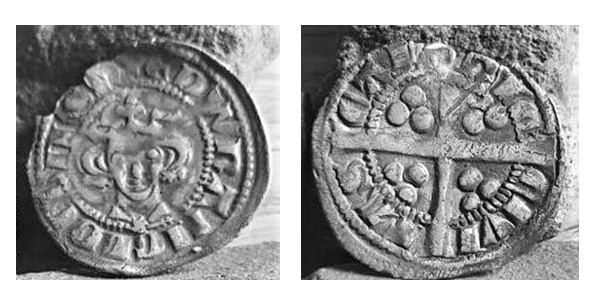- Screen Colours:
- Normal
- Black & Yellow
MIDDLE AGES – Longshanks coin (1272 – 1307 AD)
On the same field as the flint arrow-head several coins were found 23rd January 2022 – see article on History Group web under ANCIENT HISTORY for information about the arrow-head.
One of the coins found was dated to Edward I (1272-1307 AD) and is called a long cross LONGSHANKS silver penny.

Edward I was also known as Edward “Longshanks” presumably because he was 6 feet 2 inches tall (that’s 1.88 m). He would have towered over most people of the time and was King of England from 1272 until he died in 1307 of dysentery. He was buried at Westminster Abbey in 1308 and in 1774 the Society of Antiquaries of London opened his tomb and took the opportunity to determine the King's original height!
These coins were individually struck by hand meaning no two are exactly alike. They were a common circulated currency at the time, and are over 700 years old (www.govmint.com)
Obverse: Crowned facing bust of Edward in bifoliate crown. Reverse: Long cross with three pellets in each quarter.
During Edward I’s reign his confidante, Sir Guy Ferre the Younger was Lord of Benhall and on 15 Jun 1292 Edward I granted him the right to hold a market at Benhall and a market and fair at Kelton, within the manor of Benhall (per The Suffolk Traveller by John Kirby of Wickham Market who took a survey in 1732).
So, could this silver penny have been spent at the medieval fair in Kelton near Benhall?
Or could it have belonged to Sir Guy Ferre himself back from Gascony or his wife and fallen from their pocket as they walked the grounds of Benhall Manor?
An area near Benhall Church is believed to be the location of the village known as Kelton and sometimes referred to as Kelton End and it is considered to be a lost settlement of considerable size (The Suffolk Landscape by Norman Scarfe).